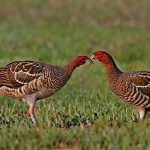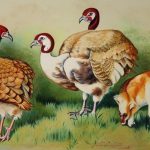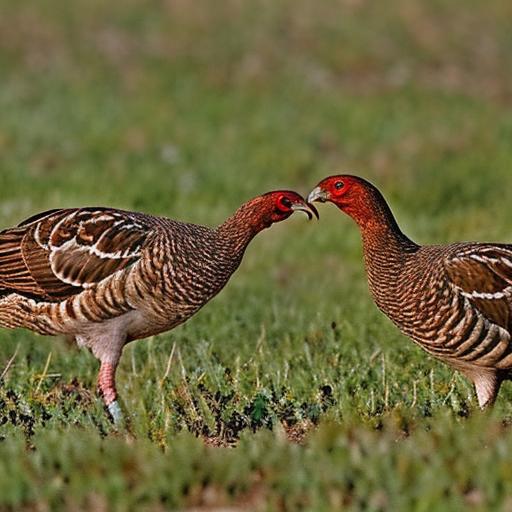The overpopulation of wild turkeys has become a significant issue in many areas, causing damage to crops, property, and posing a threat to public safety. Understanding the root of the problem is crucial in finding effective solutions. The increase in the turkey population can be attributed to several factors, including the lack of natural predators, abundant food sources, and favorable habitat conditions. Additionally, the decline in hunting activities and the adaptation of turkeys to urban and suburban environments have contributed to their rapid population growth.
Furthermore, the lack of natural predators and the availability of food in residential areas have led to an increase in the turkey population. As a result, conflicts between humans and turkeys have become more frequent, leading to property damage and safety concerns. Understanding the behavior and biology of wild turkeys is essential in developing strategies to manage their population. By understanding their nesting habits, feeding patterns, and movement, it becomes easier to implement effective population control measures.
Key Takeaways
- Understanding the problem: Identifying the impact of turkey overpopulation on the environment and local community is crucial for effective management.
- Creating a suitable environment: Implementing habitat modifications and deterrents can help discourage turkeys from congregating in specific areas.
- Managing the turkey population: Utilizing non-lethal methods such as relocation and hazing can help control turkey numbers without resorting to culling.
- Implementing breeding control measures: Implementing sterilization and contraception methods can help manage turkey population growth in a humane manner.
- Utilizing behavioral techniques: Employing scare tactics and repellents can help modify turkey behavior and reduce their impact on the environment and community.
- Seeking professional assistance: Consulting with wildlife management experts and local authorities can provide valuable guidance and support in implementing effective turkey population management strategies.
- Monitoring and evaluating the results: Regularly assessing the impact of management efforts is essential for making informed decisions and adjusting strategies as needed.
Creating a suitable environment
Creating a suitable environment is essential in managing the wild turkey population. This involves implementing measures to discourage turkeys from inhabiting residential areas and agricultural lands. One effective approach is to modify the habitat to make it less attractive to turkeys. This can be achieved by removing food sources such as bird feeders, securing garbage cans, and using scare tactics such as loud noises or visual deterrents to discourage turkeys from frequenting residential areas.
Another important aspect of creating a suitable environment is to minimize human-turkey interactions. This can be achieved by educating the public about the importance of not feeding wild turkeys and avoiding behaviors that may attract them to residential areas. Additionally, implementing regulations that prohibit the feeding of wild turkeys can help reduce their reliance on human-provided food sources.
Managing the turkey population
Managing the turkey population is crucial in mitigating the negative impacts of overpopulation. One effective method is through regulated hunting activities. By implementing hunting seasons and bag limits, it is possible to control the turkey population while also providing recreational opportunities for hunters. However, it is important to ensure that hunting activities are conducted in a sustainable and ethical manner to prevent overexploitation of the turkey population.
Another approach to managing the turkey population is through trapping and relocating individuals to areas where they are less likely to cause conflicts with humans. This method requires careful planning and consideration of the turkeys’ welfare to ensure their survival after relocation. Additionally, implementing fertility control measures can help manage the turkey population by reducing their reproductive rates.
Implementing breeding control measures
Implementing breeding control measures is essential in managing the turkey population. One effective method is through the use of contraceptive baits that can be strategically placed in areas with high turkey activity. These baits contain contraceptives that can reduce the reproductive rates of turkeys without causing harm to their health. However, it is important to conduct thorough research and testing to ensure the safety and effectiveness of contraceptive baits before widespread implementation.
Another approach to breeding control is through the use of sterilization techniques. This involves capturing turkeys and performing surgical procedures to prevent them from reproducing. While this method may be effective in reducing the turkey population, it requires careful planning and consideration of ethical and welfare concerns for the turkeys involved.
Utilizing behavioral techniques
Utilizing behavioral techniques can help manage the turkey population by modifying their behavior to reduce conflicts with humans. One effective approach is through aversive conditioning, which involves using negative stimuli to deter turkeys from frequenting residential areas. This can include using loud noises, water sprays, or visual deterrents to create an unpleasant experience for turkeys, ultimately discouraging them from returning to these areas.
Another behavioral technique is habitat modification, which involves altering the environment to make it less attractive to turkeys. This can include removing food sources, planting vegetation that is unappealing to turkeys, and implementing barriers such as fences or netting to prevent turkeys from accessing certain areas. By modifying their habitat, it becomes possible to reduce human-turkey conflicts and manage their population effectively.
Seeking professional assistance

Seeking professional assistance is crucial in developing and implementing effective strategies for managing the turkey population. Wildlife biologists, ecologists, and conservationists can provide valuable expertise in understanding turkey behavior, population dynamics, and ecological impacts. By consulting with professionals, it becomes possible to develop science-based management plans that consider the welfare of turkeys and the needs of local communities.
Additionally, professional assistance can help in conducting population surveys and monitoring efforts to assess the effectiveness of management strategies. By collecting data on turkey populations, behavior, and habitat use, it becomes possible to make informed decisions and adjust management plans as needed. Furthermore, professionals can provide guidance on public outreach and education efforts to raise awareness about coexisting with wild turkeys and promoting responsible behaviors that minimize human-turkey conflicts.
Monitoring and evaluating the results
Monitoring and evaluating the results of management efforts are essential in determining their effectiveness and making necessary adjustments. This involves conducting regular population surveys to assess changes in turkey abundance and distribution over time. By comparing data from before and after management interventions, it becomes possible to evaluate their impact on the turkey population.
Furthermore, monitoring human-turkey conflicts and property damage can provide valuable insights into the effectiveness of management strategies. By tracking reports of conflicts and damage incidents, it becomes possible to identify areas where management efforts are successful and areas that may require additional attention.
In conclusion, managing the overpopulation of wild turkeys requires a comprehensive approach that considers their behavior, biology, and ecological impacts. By creating a suitable environment, implementing population control measures, utilizing behavioral techniques, seeking professional assistance, and monitoring results, it becomes possible to effectively manage the turkey population while minimizing conflicts with humans and protecting natural resources.
If you’re looking for tips on managing poultry breeding, you might also be interested in an article on how quails sit on their eggs. Understanding the nesting and incubation behaviors of quails can provide valuable insights into managing turkey breeding in a similar context.
FAQs
What is Dwarf Fortress?
Dwarf Fortress is a popular simulation game where players manage a group of dwarves as they build and maintain a fortress.
Why do turkeys breed in Dwarf Fortress?
In Dwarf Fortress, turkeys breed as part of the game’s simulation of animal behavior and reproduction.
Why would players want to stop turkeys from breeding in Dwarf Fortress?
Players may want to stop turkeys from breeding in Dwarf Fortress if they have too many turkeys and want to control the population, or if they are experiencing gameplay issues related to an overabundance of turkeys.
How can players stop turkeys from breeding in Dwarf Fortress?
Players can stop turkeys from breeding in Dwarf Fortress by designating certain turkeys for slaughter, separating male and female turkeys, or using other in-game mechanics to control the turkey population.
Are there any mods or cheats to stop turkeys from breeding in Dwarf Fortress?
There may be mods or cheats available that can help players control the turkey population in Dwarf Fortress, but it’s important to note that using mods or cheats may alter the intended gameplay experience.
Meet Walter, the feathered-friend fanatic of Florida! Nestled in the sunshine state, Walter struts through life with his feathered companions, clucking his way to happiness. With a coop that’s fancier than a five-star hotel, he’s the Don Juan of the chicken world. When he’s not teaching his hens to do the cha-cha, you’ll find him in a heated debate with his prized rooster, Sir Clucks-a-Lot. Walter’s poultry passion is no yolk; he’s the sunny-side-up guy you never knew you needed in your flock of friends!







